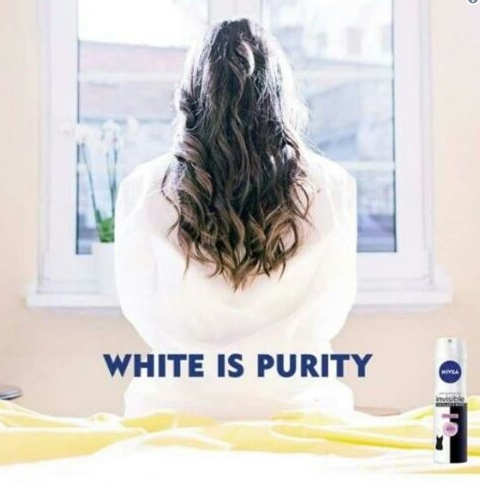In its recent international marketing campaign, Nivea used an advertisement to promote an antiperspirant that provoked a discussion in the media (Figure 1). Even though the advertisement’s image did not provoke any questions, the slogan “White is purity” was regarded by the public as rather racist, as mentioned in social media (Finley, 2017). The reason for discussing this advertisement and the slogan proposed by Nivea as racist is connected with the fact that today the global community tries not to use colors in association with racial questions (Bonilla-Silva, 2017). It is important to pay attention to the fact that, while observing this advertisement as used for the marketing campaign in the United States, it is possible to predict that representatives of minority groups will negatively react to this statement.

Although there is no direct emphasis on race in this advertisement, it is necessary to note that this slogan is culturally inappropriate. It can be perceived as an example of hidden bias or racism. Furthermore, the reference to the white color can pose a question about the appropriateness of using such phrases as “people of color” (Bonilla-Silva, 2017). Representatives of different cultures and ethnicities, including African Americans, can see in this advertisement the opposition between white and black colors focusing on race (Bonilla-Silva, 2017). Therefore, companies and officials should pay much attention to using terms or words associated with biased language to avoid the public’s negative reactions. From this point, it is expected that official statements and advertisements oriented to attracting the public are culturally sensitive.
References
Bonilla-Silva, E. (2017). Racism without racists: Color-blind racism and the persistence of racial inequality in America. New York, NY: Rowman & Littlefield.
Finley, T. (2017). 7 shockingly tone-deaf ads that should have never happened. The Huffington Post. Web.